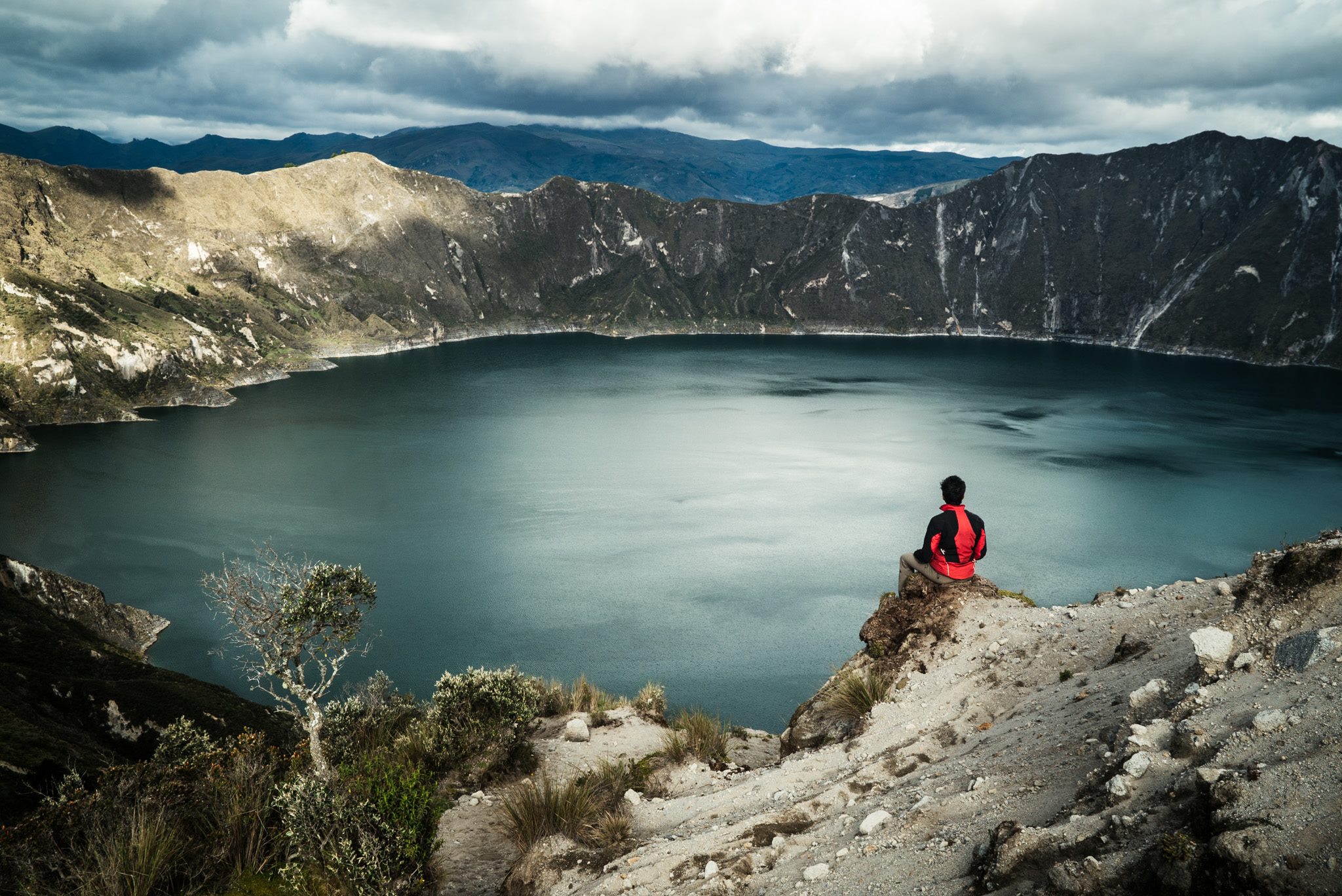About four hours of drive from Quito there is a lake tucked away in the mountains. Located at over 3500-m altitude, this volcanic crater lake is filled with emerald green water. They call it Quilotoa Lake.
Today, while sitting on the edge of the crater I look at the lake in its entirety. A soothing breeze caresses my untidy hair and I begin to unwind myself. Slowly, the closed doors of my mind open one by one and I see Quilotoa lake taking many different shapes.

It is a big bowl of green water nestled in the mountains. Maybe, tears flowed from the cheeks of the mountains and filled the entire pool. Or, is it a big tear barely contained within the eye of a mother who is separated from her only child? Or, is it a bird’s nest filled with rainwater?
The lake is a mirror in which the full moon sees its face and falls into its own admiration. Perhaps, for the same reason, the big birds fly in circles over the lake all day long.
As I hike on the dusty trail along the crater rim, my perception about the lake changes from one step to another.
The shape of the lake is as if a green butterfly emerged out of a worm and has spread out its wings getting ready to fly for the first time. From another location, it is like a big bird drying out its stretched out feathers in the sun.
It is like water in the tight palm of a child. Or maybe, it is the eye of the earth which gazes at the stars in the sky all day and night. The say, the lake has no bottom. They are right. Can there ever be depth in the eye?… It is as deep as the view in front of it.
The Quilotoa word comes from two Quechua words Quiru meaning tooth and toa means queen. Did the tooth of a queen fall from her mouth and caused the formation of the lake?
Another moment, the lake is an animal’s footprint in wet mud, pooling with water. When my mom used to knead flour she would make a small mountain of dry flour in a tray and pour water on it which would form a pool on the top. Quilotoa appears exactly like that.
The shadows of fast moving clouds slip from the crater rim, swim across the surface of the lake, climb to the side of the volcano and then disappear behind it.
As the sun falls behind the mountains, I take one last long look at the lake, painted in various shades of green and close my eyes. I take a deep breath and see the afterimage of the lake slowly appear on the dark projector screen in my mind. This image is even more beautiful than the lake itself. I keep my eyes closed and, in that moment, become a child hiding a firefly in both hands, afraid to open them lest it flies away.


